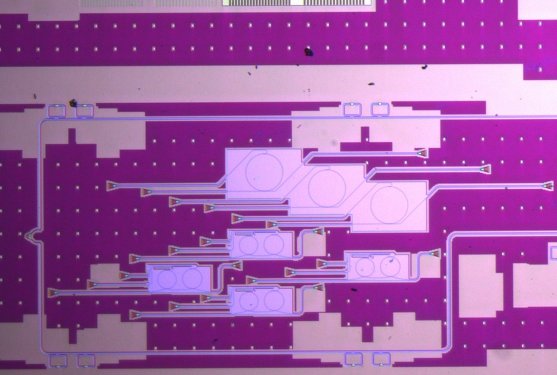When optical phase encoding is applied for signal transmission, one has to resort to interferometric demodulators in order to access this phase information by means of direct photodetection. This also holds for the quantum domain. For example, when the optical phase is encoded in prepare + measure discrete-variable QKD systems, the receiver, which then holds a single-photon avalanche photodetector, requires a delay interferometer. An asymmetric Mach-Zehnder interferometer on a planar lightwave circuits is the current workhorse that accomplishes the task.
However, a unicorn is not just an ordinary horse.
For a QKD symbol rate of 1 GHz, a delay interferometer would require a corresponding excess length of 1 ns (equivalent to about 200000 µm) in one of its arms – a delay line that results in a large chip footprint even though highly compact spirals are used for its implementation. Instead, we use a compact micro-ring resonator with a dimension of only 200 x 200 µm2 to perform the same task. So in our case,
it’s the uniqorn of the rings.
…and the rings pay off well: we obtain low quantum bit error ratios of 1.3% for an estimated secure-key rate of 5.3 kb/s over a loss budget of 21 dB. See our publications section for more details.
